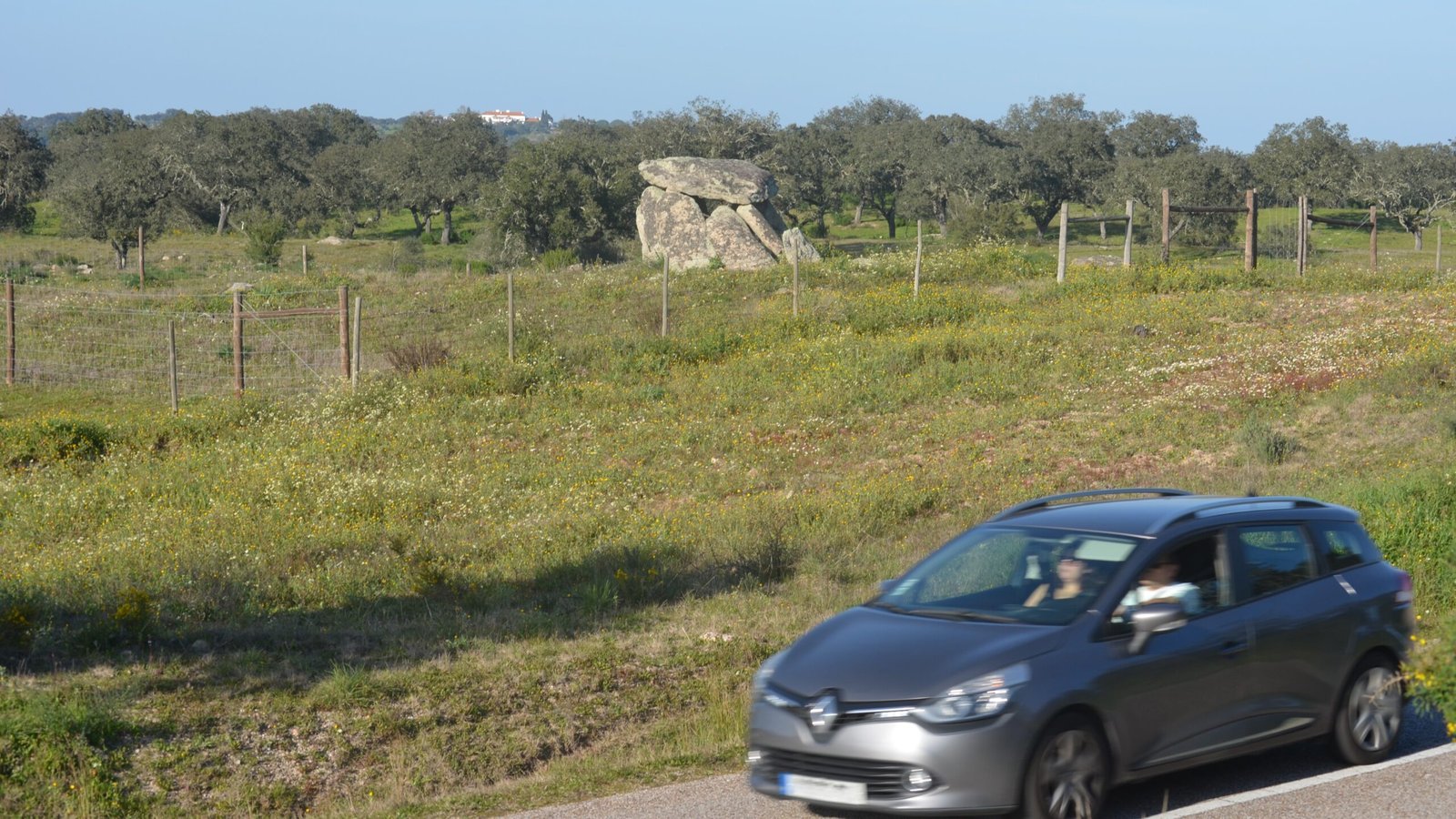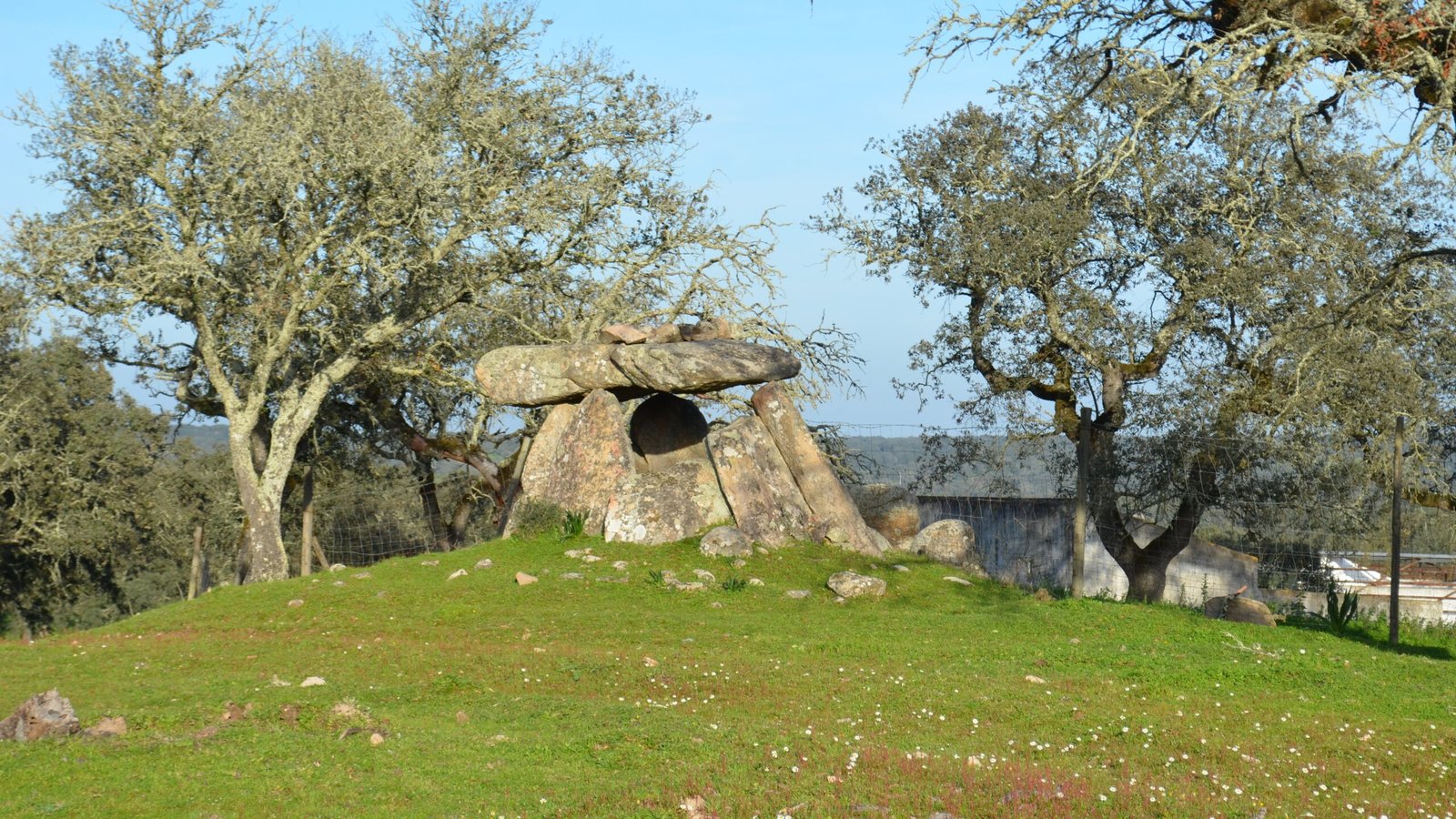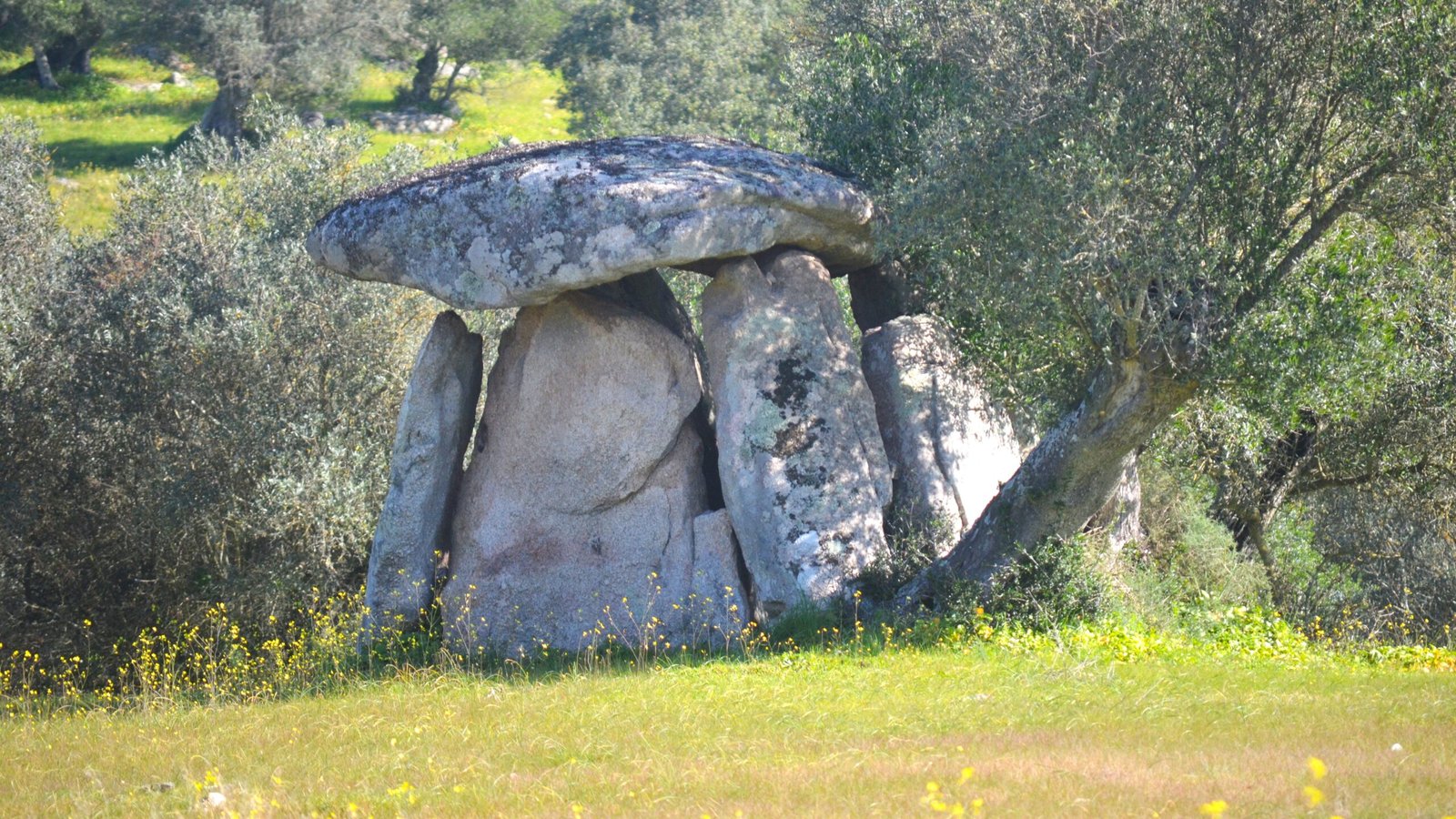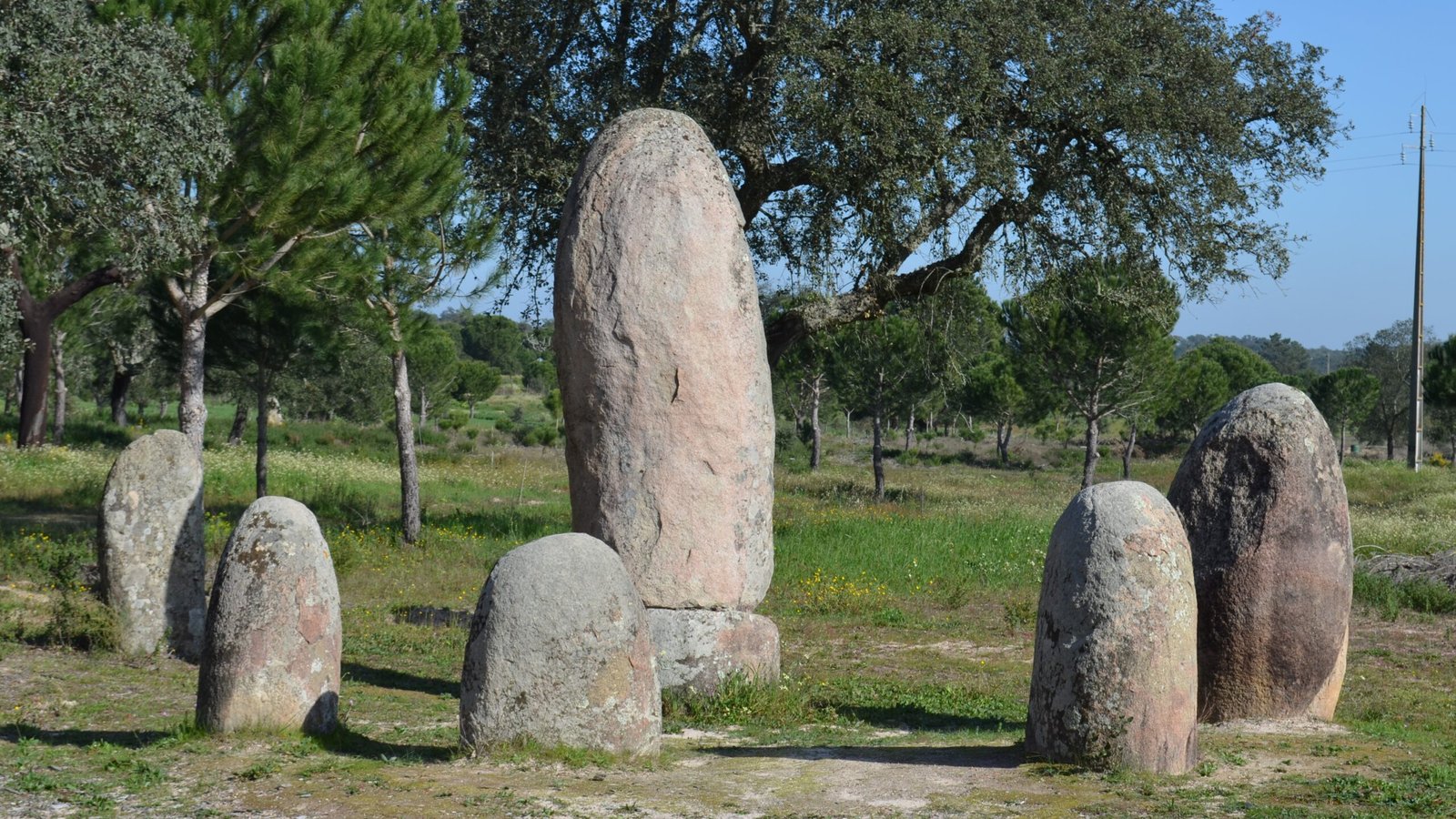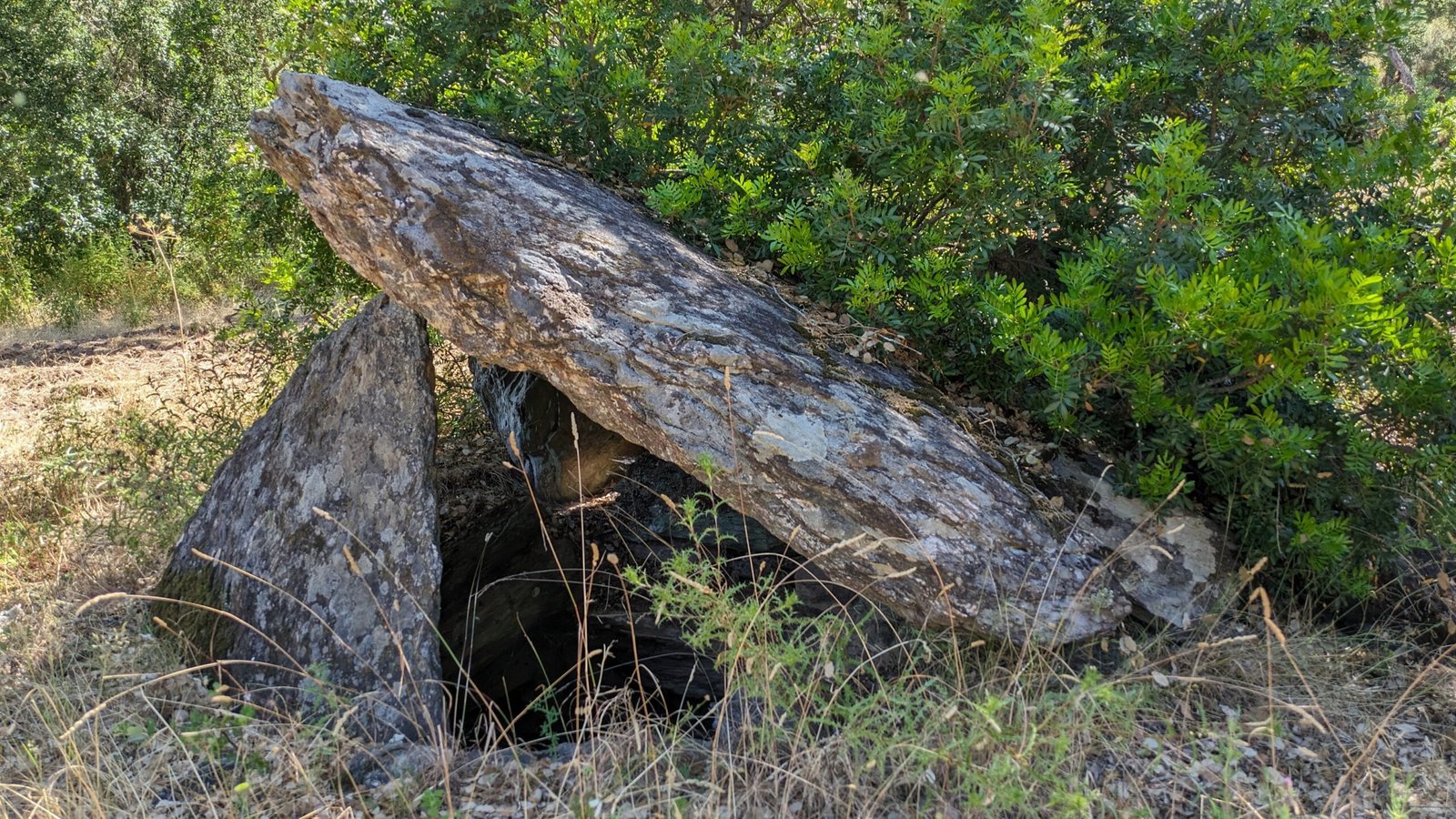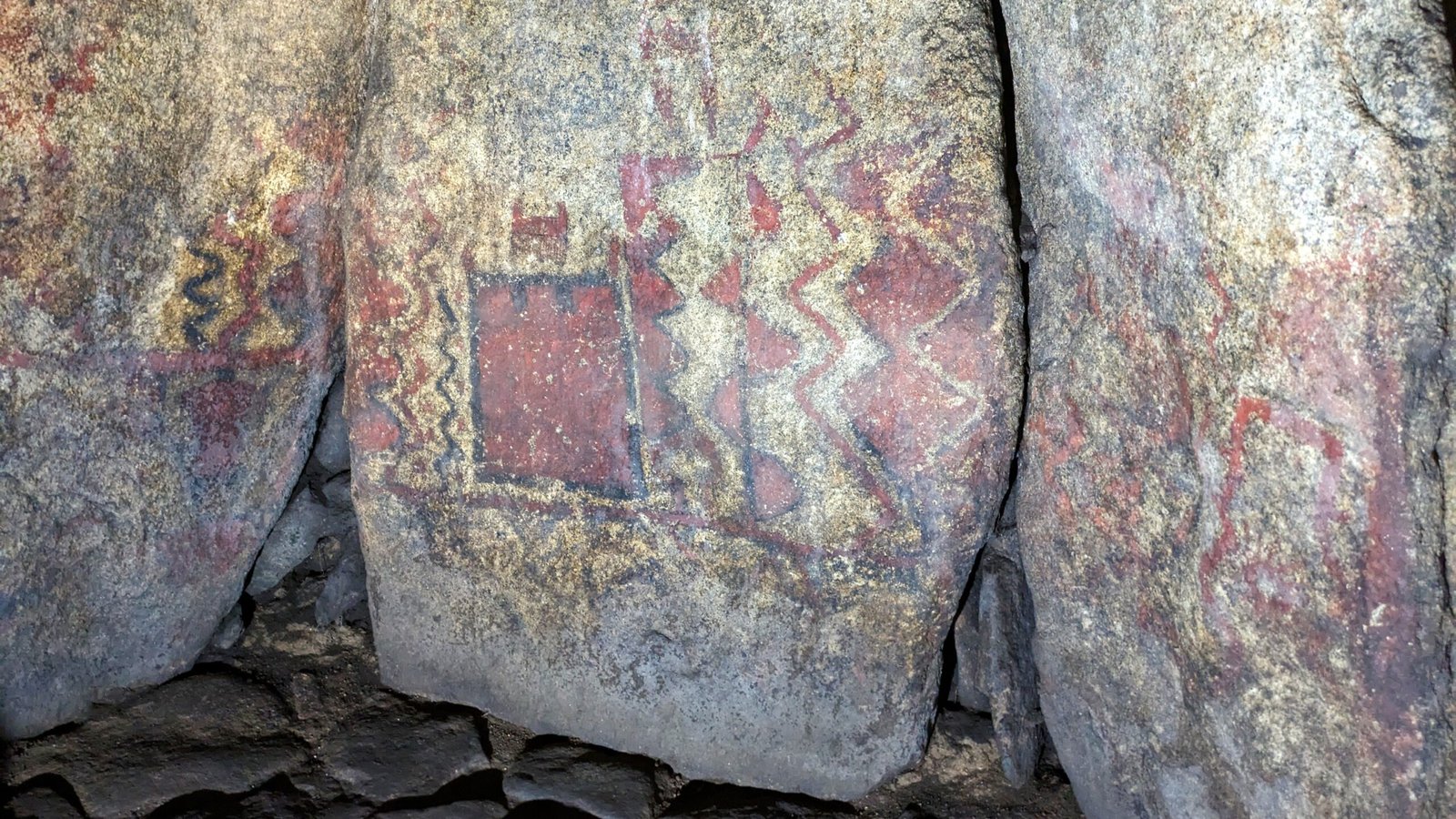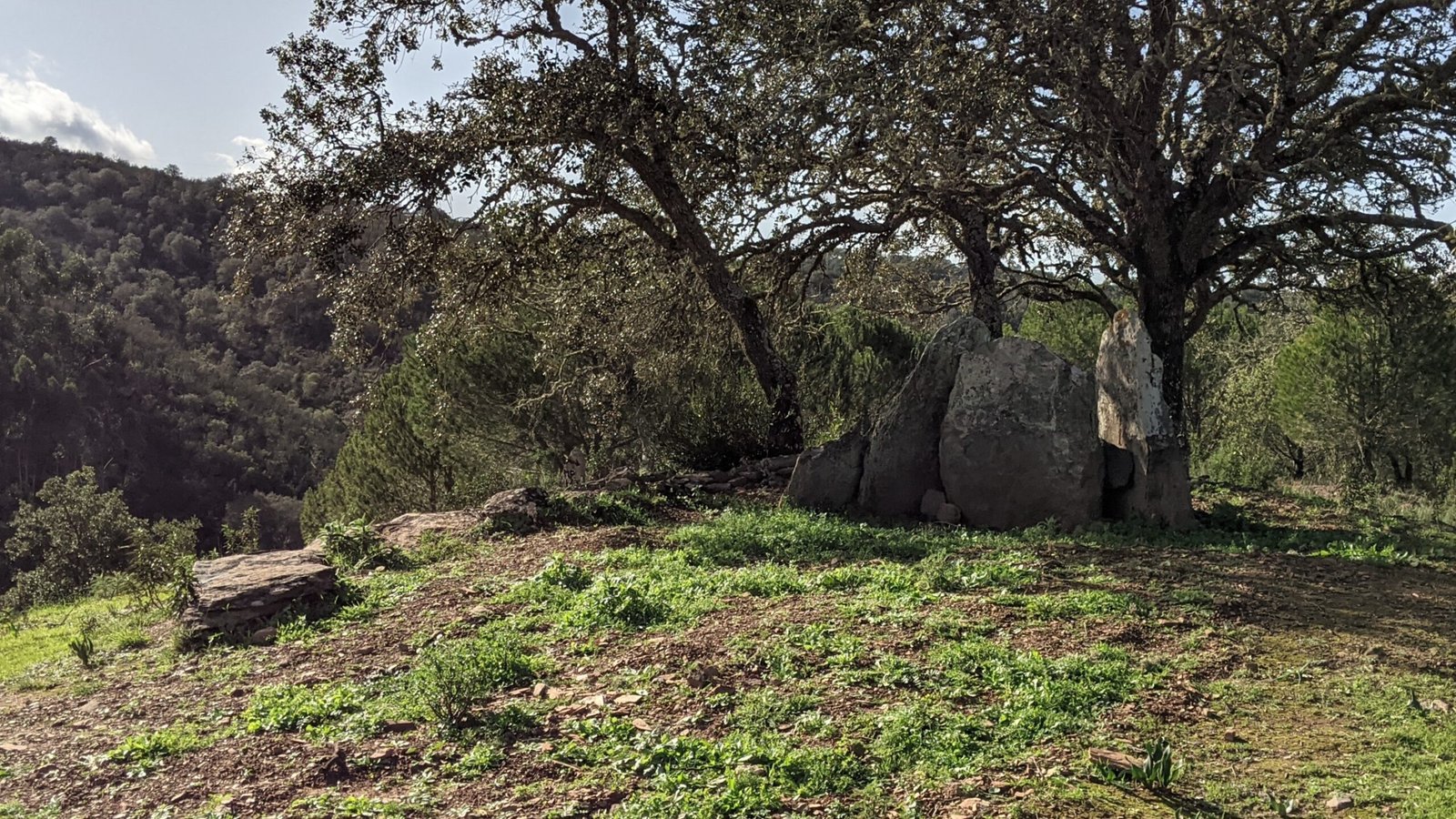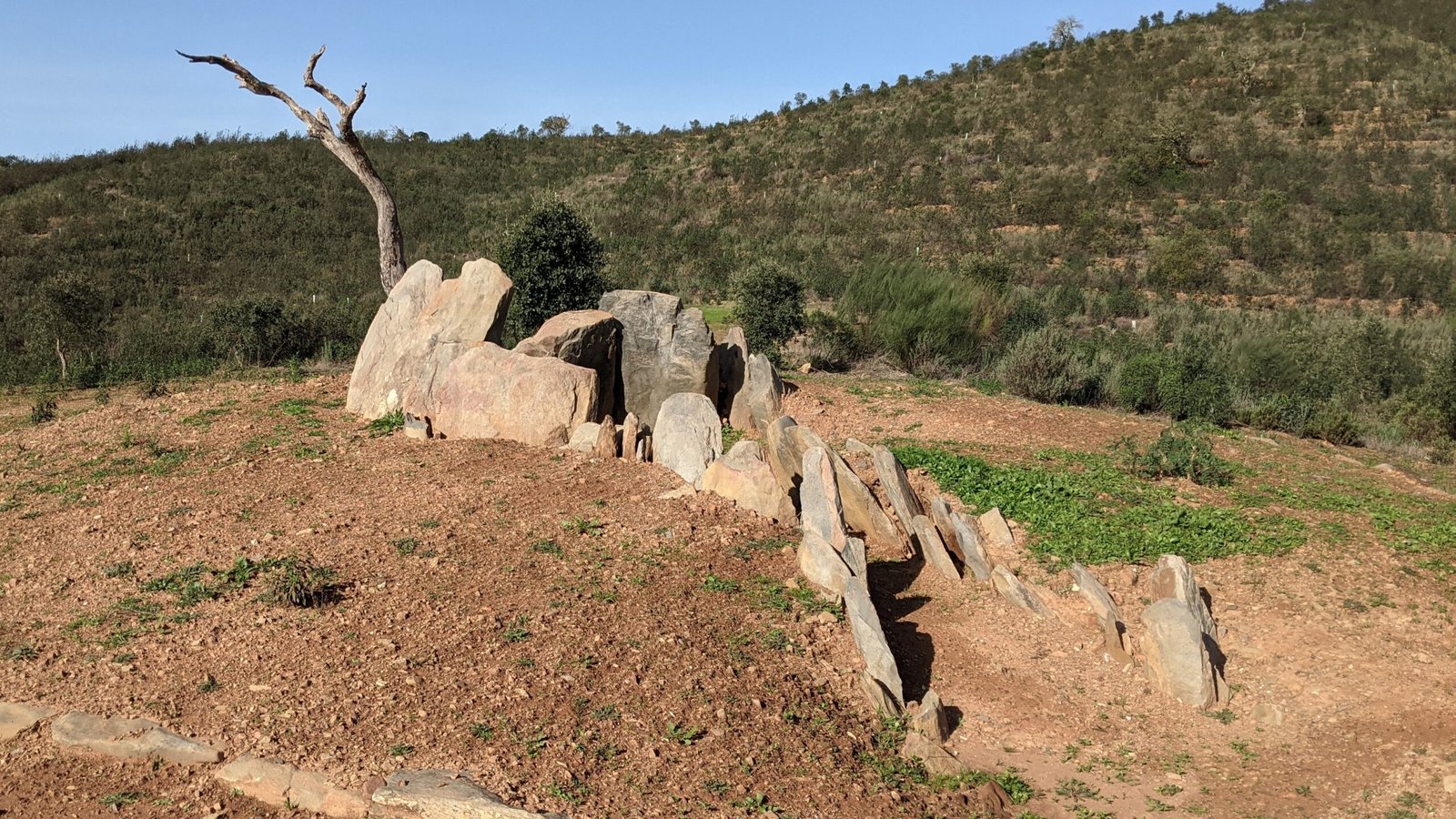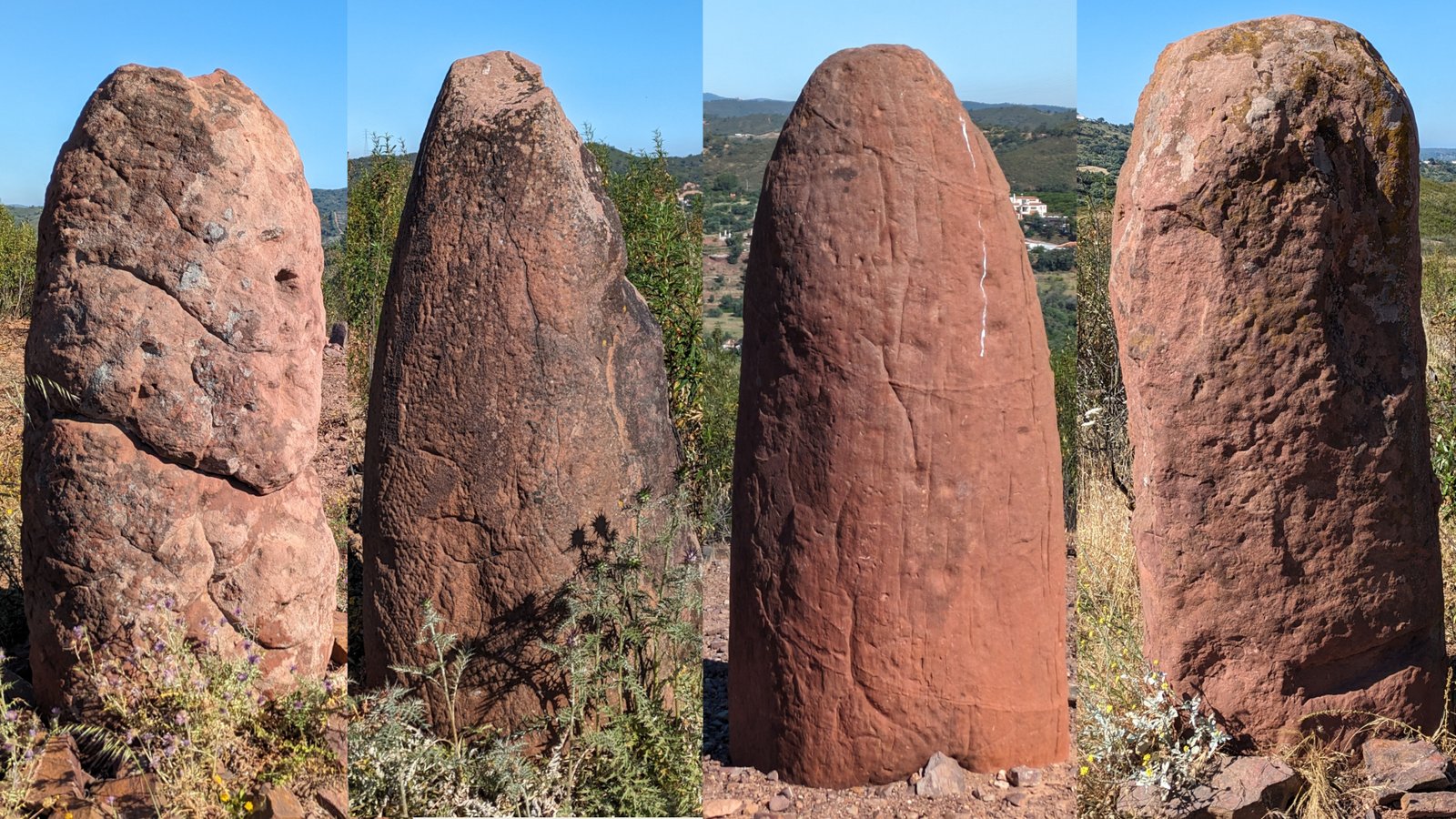The main human relics from prehistoric times are megalithic constructions. (Megalith means “large stones”)
Portugal has hundreds, if not thousands, of megalithic sites. These are broken down into the following categories:
- Tombs
- Standing Stones
- Alignments or circles
Many of these sites are visitable, but some are on private land. As archaeologists excavate these sites, any artefacts of human creation are kept in museums or universities.
Use the map at the right to search among the various megalithic sites (highlighted map markers indicate megaliths that are described on this website), or browse through the entries below. More posts are added as sites get visited.
-
Anta da Comenda Grande
Also known as: Anta da Herdade das Comendas It’s not a famous site, or one particularly noteworthy for archaeological artefacts. The farmer’s fence keeps you from walking in and around the stones. It’s easy to overlook while rushing down the road. But, if you take the time to stop and walk along the edge of…
-
Antas do Herdade de Água Doce
Also known as: Anta de Vale Beiró & Antas (Grande & Pequeno) de Caminho da Fanica Driving along the N2, Portugal’s iconic “National Road #2,” you experience the richness of the country’s geography and history. Driving along the long stretches of Alentejo countryside, you might be tempted to speed up and get to the next…
-
Anta do Monte dos Soldos
Also known as: Anta do Outeiro de Santa Clara An anta (or dolmen) with a polygonal chamber, seven uprights and an intact capstone. Its corridor has two existing uprights and a covering stone to the side. It’s on private land the capstone is lined with small stones, probably from the nearby field. Perhaps the most…
-
Antas da Lapeira
Also known as: Antas da Tapada As you drive out of Pavia, heading towards Estremoz, it’s tempting to put the boot down and save time. But slow down and look to your left. Less than a kilometer out of town, lies a beautiful example of prehistoric architecture. Nestled under a tree, on a small hill,…
-
Cromeleque das Fontainhas
Also known as: Cromeleque do Monte das Fontainhas Velhas Standing above the flat sandy soil, the stones aim for the sky, pointing the way to heaven. Walking among them, feeling their smooth shapes and measuring their arrangement, one can only ponder their construction and purpose. Was this a temple? An astronomical marker? A social gathering…
-
Conjunto Megalítico dos Morenos
In the quiet countryside of the Alto Alentejo, the water of the Santa Margarida stream flows slowly down to the Montargil reservoir. Along its banks, if you look carefully among the trees and bushes, lie two prehistoric tombs made of schist. They’ve endured some rough handling through the ages since they were built, both by…
-
Anta Pintada de Antelas
ALSO KNOWN AS: Dólmen de Antelas, or in English: the painted dolmen of Antelas On a small dirt road, in the deep interior of central Portugal, rises a small hill. Go around to the back and you find that this is no normal hill: it is an artificial mound. A tumulus, or (in Portuguese) a…
-
Anta Pedra do Alagar
ALSO: Anta da Cerca da Francisquinha There’s little left of the original construction of this tomb. It’s somewhat forlorn and tattered from age and raiding. However, it has been recently refurbished and it seems to sit a little more upright and enjoy its place on the top of a hill in the Algarve sunshine. It’s…
-
Anta do Beringel
Also called: Tholos of Cumeada On a hill in the heart of the Algarve, a bare dead tree holds vigil over an ancient megalithic tomb. The surrounding hills provide a backdrop of forest and low scrub, leaving the stones standing out under the hot sun. In the quiet, the millennia that stretch between its construction…
-
Menhirs of Vilarinha
Hiking up and down the hills of central Algarve, the remnants of the past are all around. There are medieval burial sites all around, and then there are the menirs. In a line running northeast to southwest, red sandstone obelisks stand sentinel over the hills. Each one different, they each have distinctive markings and shapes.…


